
■Fukushima Prefecture
|
Total area 13,783.90k㎡
Population 1,881,981 people Number of households 788,304households Number of municipalities 59municipalities Major cities Fukushima City, Koriyama City |
Fukushima Prefecture is divided by mountain ranges Abukuma Highlands, and the Ou Mountains that run from south to north into three regions, Aizu, Nakadori, and Hamadori. Aizu is a granary region with heavy snowfall in winter and high temperatures in summer and is popular for outdoor activities such as Urabandai(Bandai Highlands) and Lake Inawashiro. Nakadori is lined with representative cities such as Fukushima, Koriyama, and Shirakawa, which is the main artery of the prefecture with the Tohoku Shinkansen and Tohoku Expressway running through it. Hamadori is characterized by a mild climate on the Pacific Ocean side, with narrow and long plains running through it. |
Link:SHOTROK
![]() Tourist Spots/////////////////////////////////////////////////////////////////////////////////////////////////
Tourist Spots/////////////////////////////////////////////////////////////////////////////////////////////////
|
Goshikinuma
|
Ouchi-juku
|
|
Spa Resort Hawaiians
|
Miharu Takizakura
|
![]() Food/////////////////////////////////////////////////////////////////////////////////////////////////
Food/////////////////////////////////////////////////////////////////////////////////////////////////
|
Kitakata Ramen
|
Negi-soba (Green Onion Soba)
|
![]() Souveniers/////////////////////////////////////////////////////////////////////////////////////////////////
Souveniers/////////////////////////////////////////////////////////////////////////////////////////////////
|
Mamador
|
Ika-ninjin (Squid-carrot)
|
![]() Festivals/Events/////////////////////////////////////////////////////////////////////////////////////////////////
Festivals/Events/////////////////////////////////////////////////////////////////////////////////////////////////
|
Iisaka Kenka Festival
|
Nihonmatsu Lantern Festival
|

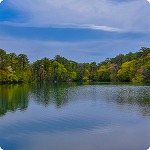 It is a collective name for several lakes and marshes, including Bishamonuma, Akanuma, Midoronuma, Ryunuma, Bentenuma, Rurinuma, Aonuma, and Yanaginuma. It is a “mysterious lake” with different colors of emerald green, cobalt blue, turquoise blue, emerald blue, and pastel blue depending on the swamp.
It is a collective name for several lakes and marshes, including Bishamonuma, Akanuma, Midoronuma, Ryunuma, Bentenuma, Rurinuma, Aonuma, and Yanaginuma. It is a “mysterious lake” with different colors of emerald green, cobalt blue, turquoise blue, emerald blue, and pastel blue depending on the swamp.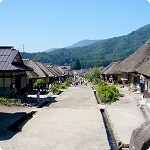 In the Edo period (1603-1868), the town prospered as a post town for the major road connecting Aizu-Wakamatsu City with Nikko and Imaichi. Today, thatched-roof houses still stand along the road as they were in the Edo period, and the area has been designated as a national treasure of traditional building preservation districts.
In the Edo period (1603-1868), the town prospered as a post town for the major road connecting Aizu-Wakamatsu City with Nikko and Imaichi. Today, thatched-roof houses still stand along the road as they were in the Edo period, and the area has been designated as a national treasure of traditional building preservation districts.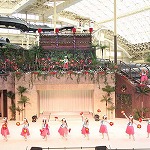 The “Water Park”, which has several types of indoor pools and slides, is a hot spot where you can always feel like you’re in a tropical country, with the room temperature kept at 28 ° C. The “Polynesian Show,” featuring hula girls, is always a big hit.
The “Water Park”, which has several types of indoor pools and slides, is a hot spot where you can always feel like you’re in a tropical country, with the room temperature kept at 28 ° C. The “Polynesian Show,” featuring hula girls, is always a big hit.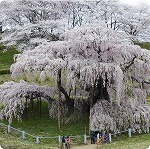 It is a famous tree that is estimated to be over 1000 years old and is counted as one of the three most famous cherry blossom trees in Japan. It has been designated as a natural monument. The tree is said to have been named “Taki-zakura” (waterfall cherry blossom) because of the countless small light red flowers that bloom from the branches that extend in all directions, making it look like a cascading waterfall.
It is a famous tree that is estimated to be over 1000 years old and is counted as one of the three most famous cherry blossom trees in Japan. It has been designated as a natural monument. The tree is said to have been named “Taki-zakura” (waterfall cherry blossom) because of the countless small light red flowers that bloom from the branches that extend in all directions, making it look like a cascading waterfall.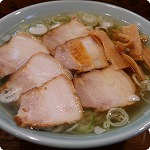 It is said that the base is essentially soy sauce, but the colors and flavors vary from store to store. The noodles are called “flat-ripened polyhydric noodles” and are generally thick noodles with a width of about 4 mm. The noodles that are moistened with a lot of water are characterized by their chewyness and peculiar curlyness.
It is said that the base is essentially soy sauce, but the colors and flavors vary from store to store. The noodles are called “flat-ripened polyhydric noodles” and are generally thick noodles with a width of about 4 mm. The noodles that are moistened with a lot of water are characterized by their chewyness and peculiar curlyness.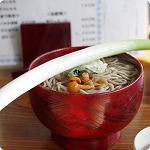 “Negi-soba” is one of the soba noodles you can enjoy at Ouchijuku. This style of soba is served with spicy daikon radish and soy sauce dipping sauce, and you use the spring onions as chopsticks to eat the noodles with spring onions together. The taste of soba eaten in an old thatched-roof house is very special because of its atmosphere.
“Negi-soba” is one of the soba noodles you can enjoy at Ouchijuku. This style of soba is served with spicy daikon radish and soy sauce dipping sauce, and you use the spring onions as chopsticks to eat the noodles with spring onions together. The taste of soba eaten in an old thatched-roof house is very special because of its atmosphere.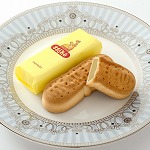 It is one of the most famous confections of Fukushima, with a gentle taste of milk-flavored bean paste wrapped in buttered dough. Its name is derived from the Spanish word for “milk-drinking child”. It also features the same cute yellow packaging as in the past.
It is one of the most famous confections of Fukushima, with a gentle taste of milk-flavored bean paste wrapped in buttered dough. Its name is derived from the Spanish word for “milk-drinking child”. It also features the same cute yellow packaging as in the past.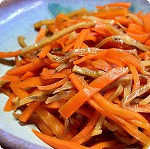 This is a simple local dish from the northern part of Nakadori, where squid and carrots are cut into thin strips and seasoned with soy sauce, sake, and mirin. It is perfect as a side dish for rice, a snack for drinks, or as a snack for tea. Even children who don’t like carrots will enjoy this dish.
This is a simple local dish from the northern part of Nakadori, where squid and carrots are cut into thin strips and seasoned with soy sauce, sake, and mirin. It is perfect as a side dish for rice, a snack for drinks, or as a snack for tea. Even children who don’t like carrots will enjoy this dish.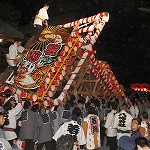 This is the annual festival of Iizaka Hachiman Shrine, located in Iizaka Onsen. During the peak of the festival, “Miyairi (Entering the palace),” six taiko floats carried by many young people clash violently to block the entry of the portable shrine into the shrine. The festival is so fierce that some people get injured in the process.
This is the annual festival of Iizaka Hachiman Shrine, located in Iizaka Onsen. During the peak of the festival, “Miyairi (Entering the palace),” six taiko floats carried by many young people clash violently to block the entry of the portable shrine into the shrine. The festival is so fierce that some people get injured in the process.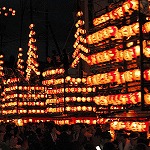 Approximately 300 bell-shaped lanterns are lit on seven floats called Taikodai and paraded through Nihonmatsu city. The road in front of Kasumi Castle has been selected as one of the 100 best roads in Japan, so you can feel the history from the pine trees and stone walls surrounding the castle walls as you reach the castle ruins.
Approximately 300 bell-shaped lanterns are lit on seven floats called Taikodai and paraded through Nihonmatsu city. The road in front of Kasumi Castle has been selected as one of the 100 best roads in Japan, so you can feel the history from the pine trees and stone walls surrounding the castle walls as you reach the castle ruins.